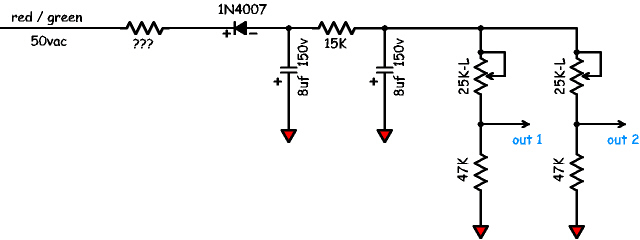I'd like to be able to set the bias separately on my two output tubes.
I've looked at Fender's CBS balance circuits but they all use some strange
pot with an extra tap. I've seen other amplifiers which balance things
through the cathodes.
I started with this 'Marshall' bias supply :

I've tried different ways of splitting this into two separate bias sources and
have come up with the following (the resistor values may need adjusting) :

Will this work ? I realise that the circuit will draw twice as much as the
previous one but it's so little that I don't think it's a problem.
Thanks,
Paul P
-
I've looked at Fender's CBS balance circuits but they all use some strange
pot with an extra tap. I've seen other amplifiers which balance things
through the cathodes.
I started with this 'Marshall' bias supply :
I've tried different ways of splitting this into two separate bias sources and
have come up with the following (the resistor values may need adjusting) :
Will this work ? I realise that the circuit will draw twice as much as the
previous one but it's so little that I don't think it's a problem.
Thanks,
Paul P
-
Comment